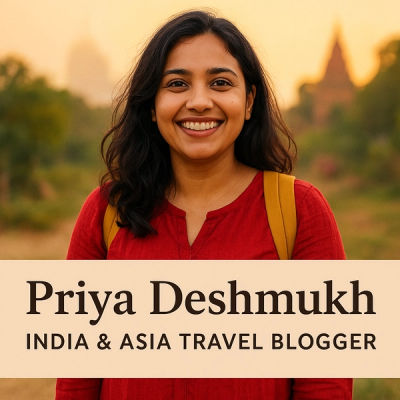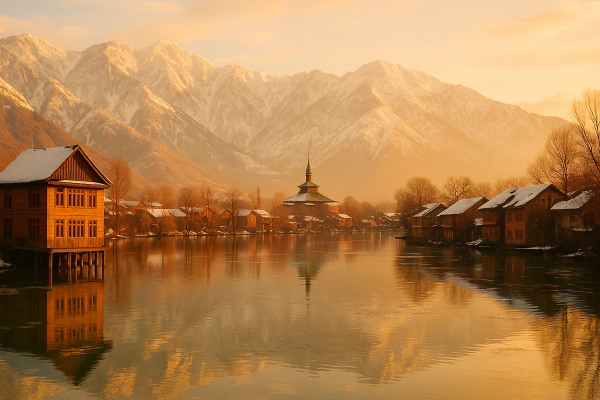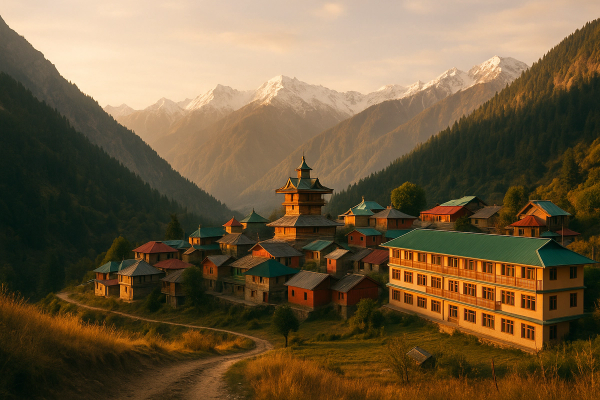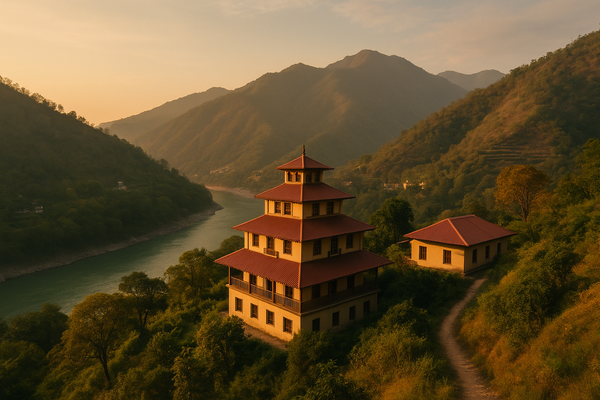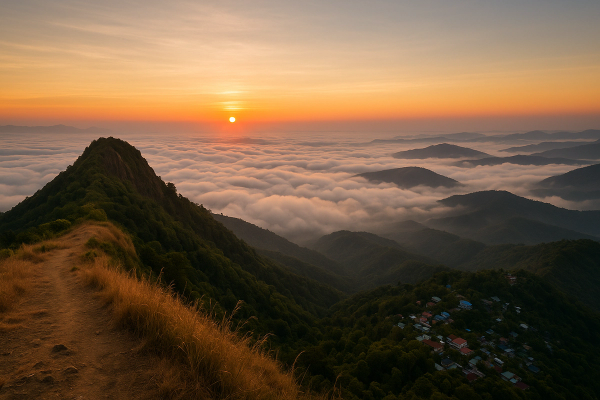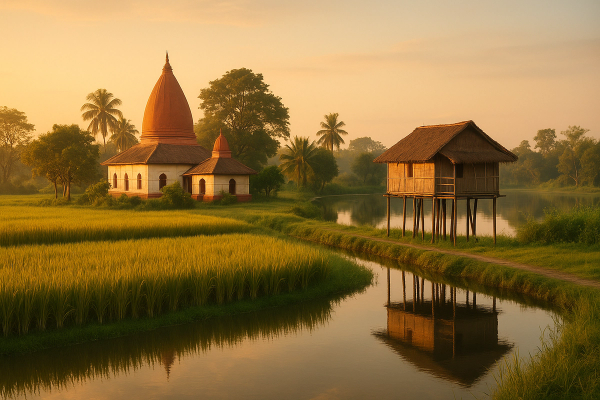Solo Women Travel in India: Safety, Routes & Tips (2025) — what I actually did, felt, messed up, and loved#
So, I went back to India… alone… in early 2025. Third time, but first proper long solo stint, the kind where you stop counting chai cups and start remembering strangers’ names. I felt nervous before I landed in Kochi, not gonna lie. India is a lot. It’s loud and bright and tender and sometimes a bit in-your-face. But it’s also wildly kind. People kept checking in on me, the aunties on trains slid rotis onto my plate like a mom would, and rickshaw drivers in Kerala taught me more Malayalam than Duolingo ever could. I’ve got scruffy notes in my phone and masala stains on my backpack to prove it.¶
Is India safe for solo women in 2025? My take and the real stuff#
Short answer: mostly yes, with caveats, context, and common sense. I felt the safest in Kerala, Goa, Sikkim, Himachal spots like Dharamshala, and in most big-city neighborhoods where there’s people out late. I was more alert in certain parts of Delhi after dark, around transit hubs anywhere, and anywhere I was the only woman on the street at night. That gut feeling? Don’t ignore it. Also, this year I noticed more CCTV on buses, marshals on some Delhi routes, and a lot of women-only spaces still going strong — Delhi Metro’s first coach for women, Mumbai local’s ladies compartments, even women-only dorms nearly everywhere.¶
- Emergency number is 112 nationwide. Save Women’s Helpline 181 and 1091 too. I used 112 once to report a creepy follow in Jaipur; the operator was calm and quick.
- In trains, I book upper berths in AC 2-tier or 3-tier. More privacy, less random foot traffic at night.
- Share your live location on WhatsApp with a trusted friend. It’s normal here, nobody thinks it’s weird.
- Dress code? Wear what you want, but I personally felt less stared-at in loose pants, kurti, scarf. Beaches in Goa are different vibes — shorts and swim ok there.
Visas, entry, phones, money — what’s changed by 2025#
Visas: the India e-Visa is very much a thing again for most nationalities. You apply on the official Indian Visa Online site, get it in a few days usually, then carry a printout because sometimes the airport staff still want paper. No real visa-on-arrival for most of us. Your passport needs at least 6 months validity and a blank page. There have been temporary pauses for certain countries in past years due to diplomatic drama, so check the official site before you book. Yellow fever cert if you’re coming from affected countries. No Covid entry hoops as of 2025 when I flew in.¶
- SIMs are easier but still paperwork-y. I got an Airtel eSIM at Kochi airport with my passport and visa. It took like 20 minutes and one minor queue meltdown.
- UPI for foreign travelers is way better now. I got a prepaid wallet linked to UPI at an IDFC First Bank counter and paid for coconuts, tuk-tuks, and temple donations with a QR. Absolute game-changer when vendors don’t have change.
- ATMs exist everywhere but can be fussy. I pull cash from bank ATMs attached to branches. Withdraw a bit extra before small towns.
Routes that felt right for solo women — tried and tweaked in 2025#
I did three mini-routes this time and mapped a fourth for later. I aimed for places where I could walk at dusk and not feel twitchy, decent hostels with female-only dorms, and easy-ish transit. Prices are up a notch in 2025 because travel demand is booming again. Ayodhya’s new temple opening last year lit a whole tourism wave and sucked up hotel availability in nearby circuits. Book ahead more than you think, especially on weekends and festivals.¶
1) Gentle Starter: Kerala + Goa, 12–14 days#
Kochi Fort — Alleppey backwaters — Varkala cliffs — Panjim — South Goa. It’s a slow, soft landing in India. Fort Kochi hostels were 900–1700 INR for female dorm beds this January, boutique homestays 3500–7000 INR. I did the public ferry in Alleppey instead of a houseboat and loved it, then splurged one night on a smaller heritage boat with a female crew member which made me feel safer. Varkala was mellow and sociable, sunrise yoga on the cliff, and I walked home after dinner without drama. Goa was Goa — I stayed in Nerul near Candolim for calm, then zipped down to Palolem. Uber doesn’t work as widely in Goa, but local app GoaMiles did ok for me. Oh and fish thali at tiny joints? Say yes.¶
2) Culture-rich: Golden Triangle + Udaipur, 9–11 days#
Delhi — Agra — Jaipur — Udaipur. Classic for a reason. I always stay near Delhi Metro lines because they’re efficient and the women’s coach feels safer at crowded times. Used a Vande Bharat train to Agra — clean and bright, bookable on IRCTC. Agra is genuinely a 1-night city for me. Jaipur felt friendlier in Bani Park and Civil Lines. Udaipur was where I exhaled… rooftop lakes, wandering lanes, sunset boat rides. Watch for “it’s closed today, come to my cousin’s shop” scam, still alive. Autos sometimes won’t use meters, so agree a fare first. I paid 120–250 INR for short rides, 400–600 across town. Midrange hotels in Udaipur ranged 3000–6500 INR this March. I found a women-run guesthouse and stayed longer than planned, because of course I did.¶
3) Mountains Lite: Rishikesh — Dharamshala — Amritsar, 10–12 days#
Rishikesh gave me early-morning Ganga walks and live kirtan with tea-steam breath. I took a comfortable Volvo night bus to Dharamshala, but if you’re new to India, consider breaking it up. In McLeod Ganj I took a cooking class with an auntie who insisted I call her Mummy-ji and overfed me momos. Amritsar’s Golden Temple is safe-feeling and almost excessively kind to solo women — I slept in the basic pilgrim quarters once, but this time did a budget hotel within 500 meters. Free langar meals still humbling. Heads covered, shoulders too, and just be present. It’s magic.¶
4) Northeast Green: Meghalaya + Sikkim, 10–12 days#
I only did Meghalaya this trip, saved Sikkim for the pre-monsoon window. Shillong felt casually safe in daylight, and Cherrapunji’s living root bridges made me feel tiny and brave at the same time. Monsoon brings leeches, bring salt. For Sikkim, foreigners can visit popular areas like Gangtok and Pelling, but certain zones need a permit. You can get the Protected Area Permit via registered operators or at checkpoints — easy but a bit of paperwork. Flights into Pakyong can be weather-sketchy, so many of us still fly to Bagdogra and drive up.¶
Getting around in 2025 without losing your mind#
IRCTC still runs my life. I booked trains 2–3 weeks ahead when I could, but Tatkal last-minute worked once in a pinch. The newer Vande Bharat trains are great for day hops like Delhi–Jaipur, Mumbai–Surat, Chennai–Mysuru. Delhi Metro is still my gold star for safe-ish urban transit, Bangalore’s metro has gotten better and reduced my Ola rage. Uber and Ola exist in most cities, but in small towns it’s auto-rickshaws, shared jeeps, or your feet. I’m more choosy about night travel now. If I can’t arrive before 9 pm, I push my plan. Daylight saves stress.¶
- Short metro rides are like 20–60 INR. Trains chair car on Vande Bharat can be 800–1800 INR for mid-range distances.
- Download offline maps. Cell data hiccups on highways, still.
- Women-only train and metro spaces help during rush, but don’t rely on it as a force field. Still stay alert.
Staying somewhere that actually feels safe#
Hostels have gotten good, honestly. In 2025, female-only dorm beds ran me 700–1500 INR in off-peak, up to 1800–2200 INR in tourist hotspots on weekends. Midrange hotels 2500–6000 INR. Boutique stays 5000–12,000 INR depending on city and season. I look for 24-hour reception, solid door locks, proximity to a main road that actually has people around. I use a tiny doorstop alarm sometimes — yes, I’m that person — and I don’t advertise my room number. Staff in Kerala and Himachal were especially protective once they realized I was solo. Like, they will literally escort you to the pharmacy if you sneeze.¶
What I wore, how I acted, and why it kinda matters#
I don’t think women should have to change for safety — at all — but I notice the difference in how often I get stared at when I wear a loose kurti and dupatta in North India versus a tank top. So I do what keeps my stress low. I learned enough language sprinkles to be useful: “bhaiya, meter?” in autos, “bas” to say stop, “nahi chahiye” for vendors. Shoes off at temples, headscarf for gurdwaras, right hand for giving money. Smiling helps, but firm voice helps more. Also, nobody can tell me I didn’t eat street food — I just pick busy stalls with high turnover and ask for hot, fresh. My stomach still went rogue twice. ORS packets are my religion.¶
Health, heat, pollution, monsoon — the unsexy essentials#
Heat waves have been rough lately. March felt like May in Jaipur. I shifted sightseeing to early mornings and post-4 pm. Winters in Delhi now mean air that tastes like toast sometimes — I carried a KN95 and used it in the worst smog days. Mosquitoes love me, so I used roll-on repellent and wore light long sleeves at dusk. Monsoon in the south is lush but also slippery and leechy in the Northeast. I drink filtered water or buy sealed bottles, avoid ice unless I’m confident, and honestly coconut water saved me twice. Pharmacies are excellent, and chemists will hand you what you need with zero judgement.¶
Money talk, scams I met, and how I kept my stuff#
UPI meant I rarely carried big cash. When I did, I split it around — a bit in my bra pouch, a bit in my tote, some back at the hotel. Scams I hit in 2025: a “your hotel is closed, come with me” at the Jaipur railway station, a “government emporium only” tuk-tuk tour, and the classic taxi switcheroo where they claim the meter is dead. I used Google reviews and a quick phone call to the hotel to avoid detours. For cyber stuff, the 1930 number is a helpline for digital payment frauds. Didn’t need it, thankfully, but I saved it.¶
Moments that healed my anxious brain#
Varanasi at dawn — the pink light on the ghats, a boatman who called me didi and passed me a ginger chai. A women-run cafe in Fort Kochi where the owner slid over and asked me if I’d eaten breakfast and then wouldn’t take my money for the second appam because “you are traveling alone, beta, eat.” Me and him — a random college kid I met on the train — tried to count the stations between Pathankot and Kangra and got it wrong every time. A policeman in Udaipur shooed away a pushy tout with a single eyebrow raise. I don’t wanna over-romanticize it. India will test you. But it also… holds you, when you let it.¶
If you’re waiting to feel 100% ready, you’ll never go. I went at 70% and India met me at the airport with a cup of sweet tea and a thousand honks.
Quick 2025 checklist that saved my butt more than once#
- Two backup payment methods: UPI wallet plus a physical card in a separate spot.
- IRCTC account set up with passport, and a couple of routes starred in advance.
- Copies of passport, visa, travel insurance in your email and on your phone.
- Local eSIM at the airport, not after you’re jet-lagged in town.
- Learn to say “no” nicely but firmly. Smile optional.
- Respect local laws: alcohol is restricted in Gujarat and Bihar, different hours elsewhere. Dress codes at religious sites are real.
Where I’d send a first-time solo woman right now#
Kerala backwaters, Varkala or Fort Kochi to start. Then Udaipur if you want palaces and daydream sunsets. Rishikesh if you want to breathe. Goa if you want to exhale and dance. Meghalaya if you want to feel small in a very good way. Delhi is doable with a plan — stay near a metro line, do mornings for Old Delhi, and don’t not go because of the headlines. Just… start where your nervous system says “okay, I can do this.”¶
Final thoughts, 2025 edition#
India isn’t one thing. It’s crowded and gentle, chaotic and careful. I felt safer than the internet told me I would, not because risk doesn’t exist, but because a thousand strangers and a few systems actually worked. I kept my guard up without letting it steal my joy. And yes, I’d go again tomorrow, same backpack, same messy bun, same habit of buying too many mangos. If you want more real trip notes and destination rabbit holes, I drop mine and read others at AllBlogs.in — it’s become my late-night planning habit when I’m supposed to be sleeping.¶


